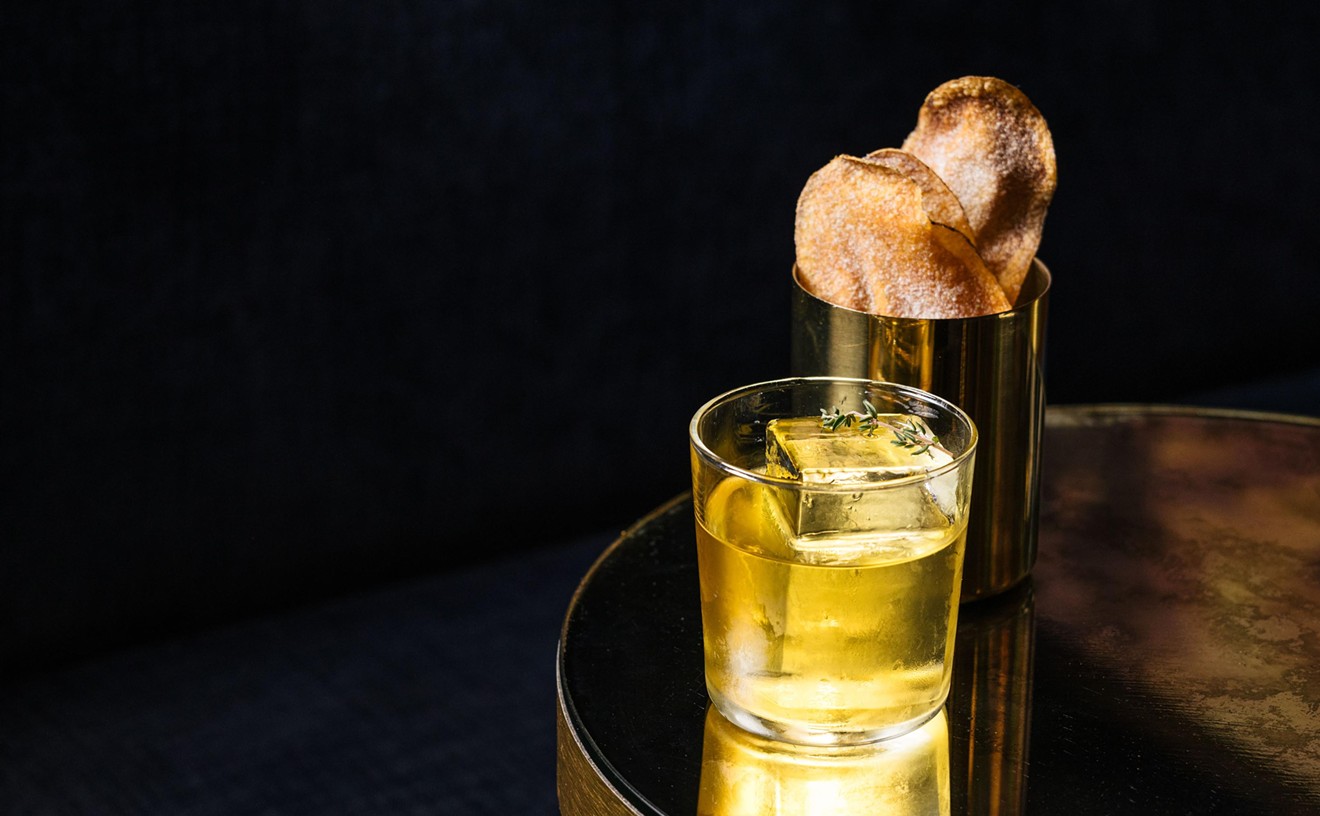It's mid-morning on a Thursday at Posh restaurant in Scottsdale, but for chef Josh Hebert it feels a bit like Christmas. Standing behind the counter at the sleek restaurant the chef cuts open a cardboard box to reveal the spoils inside.
From the weekly delivery he unloads a giant bag of katsuobushi (dried bonito flakes), jars of roasted sesame seeds, jugs of mirin and soy sauce, and several types of miso. Two boxes of artisan Sun ramen noodles sit nearby, and as we stand there, admiring the haul, a delivery guy shows up with a box of fresh seafood from California.
"Every type of miso possible," Hebert says with a smile.
See also: The Trail: Lori Hashimoto and Hana Japanese Eatery Make Mirugai, or Geoduck Sashimi
Some of these Japanese food products will last for weeks, but most of the ingredients will be gone by this time next week.
Most of the time Hebert's restaurant turns out elegant, multi-course, improvisational tasting menus. Diners come to the restaurant, tell the kitchen their preferences, and the chefs create a menu that's tailored to the table's individual likes and dislikes. Though Hebert never intended to make his restaurant a haven for picky eaters, the concept, understandably, attracts diners with restrictive food allergies and preferences.
But on Tuesday nights the restaurant lets a different side shine, and serves a concise menu of Japanese food. Really, it's just a menu of different types of ramen with two or three sharable appetizers available to start the meal.
It may not sound like a big deal that some gaijin chef at a fancy Scottsdale restaurant serves ramen once a week, but Hebert is not your average gaijin, or "outside person" in Japanese. He spent a more than year living, eating, and cooking in Tokyo, and brought back a serious appreciation for the country's food when he returned to the Valley.
Hebert hosted a two-night pop-up ramen bar in 2011 at Cycle,a now-defunct downtown restaurant. And over the next few years, he put on sporadic, late-night events, drawing hungry crowds to the restaurant from 10 p.m. to midnight with promises of real-deal Japanese street food.Tuesday ramen nights at Posh became a weekly affair in 2014. Now you can indulge in a bowl of noodle soup every Tuesday from 5 to 9 p.m.
The menu always include four types of ramen (sometimes Hebert throws in a special flavor) including shoyu, miso, shrimp, and goma. The last option is what Hebert considers his specialty, and not only because you'd be hard-pressed to find it anywhere else in town.
"This is my take on the bowl I fell in love with in Japan," Hebert says.
More specifically, it's inspired by the bowl he used to eat at a ramen shop in the Gotanda neighborhood of Tokyo. Hebert spent about a year and a half living in the capital of Japan while opening a restaurant there, and when he came back to the states, he felt the urge to recreate one of his favorite dishes.
The goma, or seasame, ramen starts with char-sui pork fat -- which Hebert uses to coax the flavor out of minced garlic, shallots, and ginger - before using sesame paste to de-glaze the saucepan.
"Ladies and gentlemen, no tahini," Heberts warns. "You can't make goma ramen with tahini."
Next, he adds a splash each of soy sauce, sake, and mirin, to finish off the ramen base. Hebert lets the rich mixture reduce for a while before pouring in equal parts dashi and pork stock. Dashi, a clear soup base, takes it flavor from ingredients such as dried kelp and bonito flakes, while the pork stock benefits from two and a half days of simmering.
"We take turns coming into the restaurant on the weekend to check the stock," Hebert explains.
The noodles go into a pot of boiling water for no more than a minute, just the right amount of time to cook the traditionally-alkaline noodles without compromising their firm texture. Hebert cooks the noodles and pulls them out of the water with a basket strainer, and shakes off the excess water (so as not to dilute the broth) before dumping the pile of noodles into the bowl.
From there it's a simple task of piling on the toppings, which include finely julienned leeks and carrots, shisito peppers, two slabs of char-sui pork, and a sprinkle of sesame seeds. On top of it all, Hebert perches a mountain of katsuobushi, or dried and smoked tuna. When placed on the hot bowl of soup, the thin shavings move subtly, like they're dancing over the top of the dish.
The $12 serving of noodles and soup you get at Posh is no small meal, but Hebert says most customers can't finish because they're eating wrong. The proper ramen eating technique involves slurping the noodles -- literally sucking them down -- as quick as possible. The slurping not only allows you to eat without having to wait for the broth to cool, it also lets you finish the bowl before you even realize you're full.
"[In Tokyo] I would see these tiny guys sloshing down bowls of ramen with piles of noodles this high," Hebert says, holding his hand six inches above the bowl.










